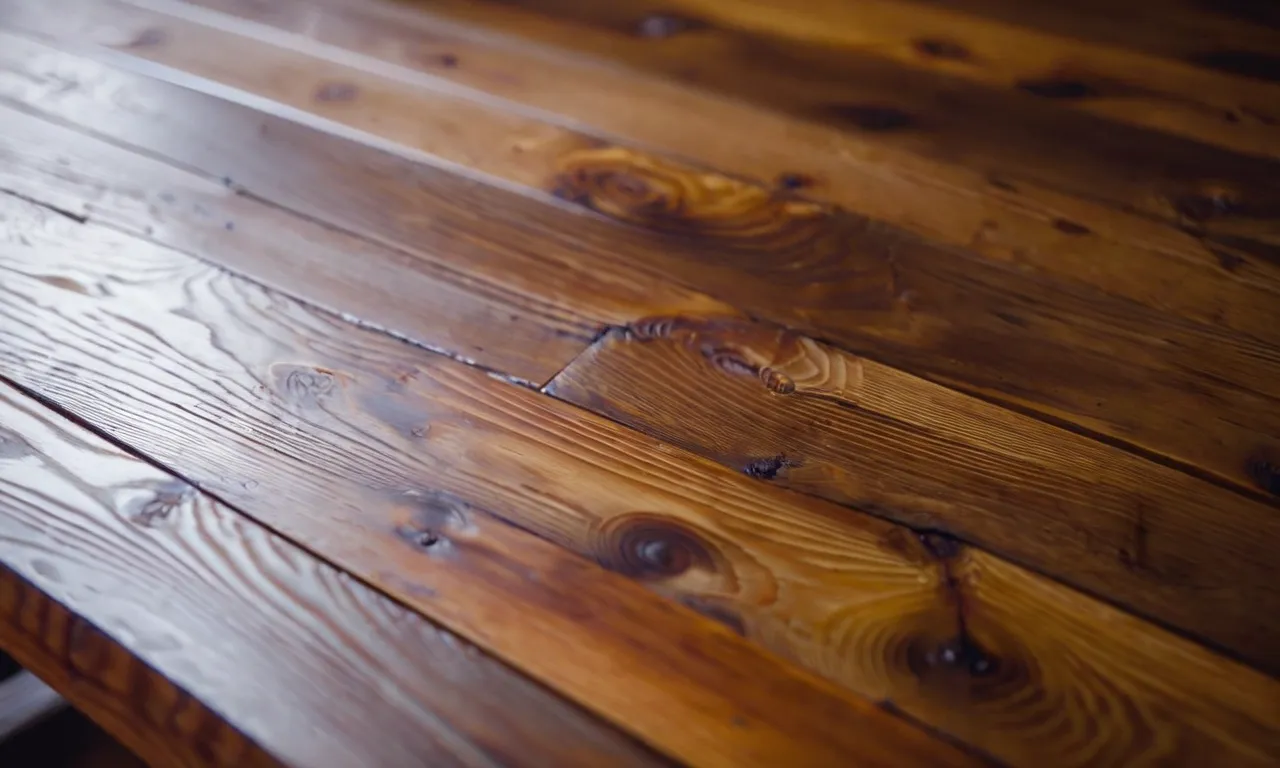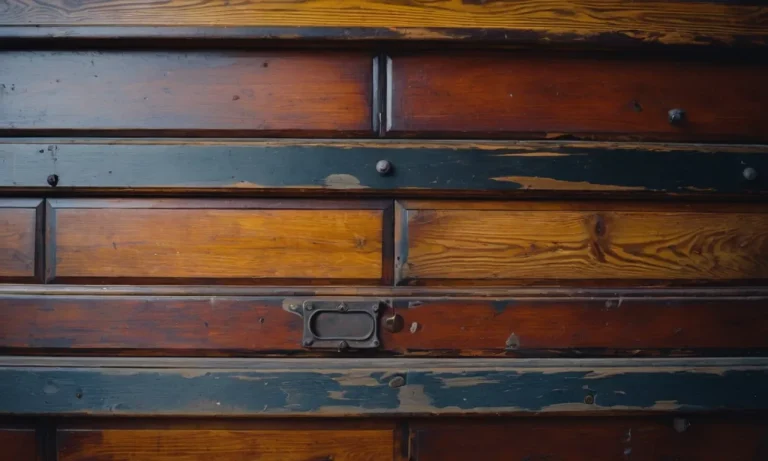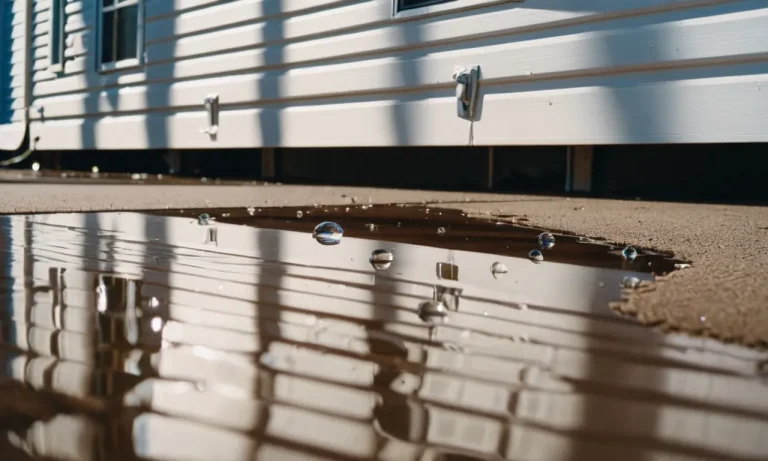Is Pine Wood Good For Furniture? A Detailed Look
Pine wood has been a popular choice for furniture and woodworking projects for centuries. Its soft grain and light color make it visually appealing, while its affordability draws many crafters and homeowners to it. But is pine truly a good option for your next furniture project?
Let’s take a detailed look at the pros and cons.
If you’re short on time, here’s a quick answer to your question: Pine can be a great budget-friendly option for some furniture pieces, but may not be the best choice for items that need to withstand heavy use due to its softness.
The Appearance and Affordability of Pine Wood
Pine Wood Has a Light, Neutral Color
Pine wood is widely known for its light and neutral color, which adds a touch of warmth to any space. Its natural hues range from creamy white to light yellow, with occasional reddish-brown streaks. This versatility in color makes pine wood a popular choice for furniture, as it can easily complement various interior design styles.
Furthermore, the light color of pine wood allows it to reflect natural light, creating an airy and bright atmosphere in a room. This makes pine furniture an excellent option for smaller spaces or areas that require additional illumination.
It is important to note that pine wood does age and darken over time, developing a unique patina that adds character and charm to the furniture. This natural aging process can enhance the overall aesthetic appeal of pine wood furniture, giving it a rustic and timeless look.
Pine is Budget-Friendly Compared to Other Hardwoods
When it comes to affordability, pine wood is a great choice for furniture. Compared to other hardwood options such as oak or mahogany, pine wood is generally more budget-friendly.
The availability and sustainable sourcing of pine wood contribute to its lower price point. Pine trees grow relatively quickly, making them easier to cultivate and harvest. This abundance in supply helps keep the cost of pine wood furniture relatively low compared to other hardwood alternatives.
In addition to its affordable price, pine wood is also known for its durability. Although it may not be as hard as some of the other hardwoods, it is still a strong and sturdy material that can withstand everyday use.
Proper care and maintenance can help extend the lifespan of pine wood furniture, ensuring that it remains a valuable investment for years to come.
The Softness and Structural Strength of Pine
When considering the suitability of pine wood for furniture, one important factor to assess is its softness. Pine is widely recognized as a relatively soft wood compared to hardwoods such as oak or mahogany.
This softness can be both an advantage and a disadvantage depending on the intended use of the furniture piece.
Pine is a Relatively Soft Wood
Pine wood is known for its softness and is often used in furniture that requires a certain level of flexibility. The softness of pine allows for easier shaping and carving, making it a popular choice for intricate designs.
This makes pine a great option for furniture pieces that require artistic detailing or intricate moldings.
However, the softness of pine can also make it more prone to dents, scratches, and wear over time. This is especially true in high-traffic areas or if the furniture is not properly cared for. Nevertheless, pine furniture can still be incredibly durable and long-lasting if properly maintained.
Density and Grain Impact Sturdiness
While pine may be softer compared to hardwoods, its structural strength is not to be underestimated. The density of the wood and the direction of its grain play a significant role in determining the sturdiness of pine furniture.
Pine wood has a relatively low density, which allows for easier handling and transportation of furniture pieces. However, this lower density can also affect the overall strength of the wood. To compensate for this, pine furniture is often constructed using techniques such as joinery or using other reinforcing materials.
The grain of pine wood can vary, and this can impact its structural integrity. The closer the grain, the stronger the wood tends to be. This means that pine boards with tighter grain patterns will generally be more durable and resilient compared to those with looser grain.
It’s important to note that while pine may not be as inherently strong as hardwoods, it can still be a suitable choice for furniture if used in the appropriate manner. By considering the softness and structural strength of pine, furniture makers and consumers can make informed decisions about its application in various furniture pieces.
Best Uses for Pine Wood Furniture
Pine Works Well for Indoor Furnishings
Pine wood is a popular choice for indoor furniture due to its affordability and versatility. It is a softwood that is easy to work with, making it suitable for a wide range of furniture styles and designs.
Whether you are looking for a rustic farmhouse look or a more contemporary feel, pine can be easily shaped and crafted to meet your design preferences.
One of the key advantages of pine wood furniture is its light weight. This makes it easy to move around and rearrange your living space whenever you desire. Additionally, pine has a natural beauty with its distinct grain patterns and warm tones.
It can be left unfinished, giving it a more natural and rustic appearance, or it can be stained or painted to match your desired aesthetic.
Pine wood furniture is also known for its durability. With proper care and maintenance, pine furniture can last for many years. Regular dusting and occasional polishing can help to maintain its appearance and extend its lifespan.
However, it is important to note that pine is a softer wood, so it may be more prone to scratches and dents compared to hardwoods like oak or maple. Nevertheless, many people appreciate the character and charm that these imperfections can bring to pine furniture.
Outdoor Pine Furniture Requires Maintenance
Pine wood can also be used for outdoor furniture, but it does require some extra care and maintenance. When exposed to the elements, pine is susceptible to moisture and insect damage. To protect your outdoor pine furniture, it is recommended to apply a sealant or finish that is specifically designed for outdoor use.
This will help to prevent water absorption and minimize the risk of rot and decay.
Regular cleaning and reapplication of the sealant are important to ensure the longevity of your outdoor pine furniture. It is advisable to inspect the furniture regularly for any signs of wear or damage, and address them promptly to prevent further deterioration.
Additionally, it is wise to store outdoor pine furniture indoors during harsh weather conditions or prolonged periods of non-use.
While pine wood may require more maintenance for outdoor use, it is still a popular choice for budget-conscious homeowners who want to create a cozy and inviting outdoor living space. With its natural beauty and versatility, pine furniture can add a touch of rustic charm to your outdoor area.
Alternatives to Pine for Furniture Making
While pine wood is a popular choice for furniture making due to its affordability and availability, there are several alternatives that offer unique qualities and characteristics. Here are some alternatives to consider:
Oak for Hardness and Durability
Oak is known for its exceptional hardness and durability, making it an excellent choice for furniture that needs to withstand heavy use. Its natural resistance to moisture and insects also adds to its longevity.
Oak furniture is often passed down through generations, showcasing its ability to stand the test of time. The prominent grain pattern and warm tones of oak wood give furniture a timeless and elegant look.
Maple for Smooth Finishes
Maple wood is highly regarded for its smooth and consistent grain, making it a popular choice for furniture that requires a polished finish. The fine texture of maple allows for a flawless paint or stain application, resulting in a sleek and refined appearance.
Additionally, maple wood is known for its strength and durability, ensuring that furniture made from this material will last for years to come.
Cherry for Richness and Character
Cherry wood is prized for its rich and warm tones, which deepen and mature over time. This wood species exhibits a beautiful grain pattern and natural luster that adds character and sophistication to furniture pieces.
Cherry wood is also known for its strength and durability, making it suitable for both traditional and contemporary furniture designs. Additionally, cherry wood is often used for intricate detailing and carving due to its workability.
When considering alternatives to pine for furniture making, it’s important to weigh factors such as hardness, durability, finish options, and aesthetic appeal. Each alternative wood species mentioned above offers unique qualities that can enhance the overall look and longevity of your furniture.
Conclusion
Pine can make an attractive and affordable choice for furniture like beds, cabinets, shelving, and tabletops. However, its softness means it may not withstand heavy use and abuse as well as hardwoods like oak or cherry. Consider how you plan to use the furniture when deciding if pine is a good fit.
With proper care and maintenance, pine furniture can provide beauty and function for years to come.







